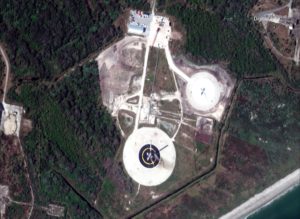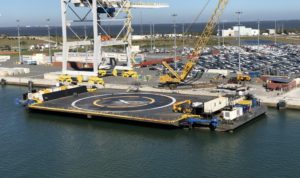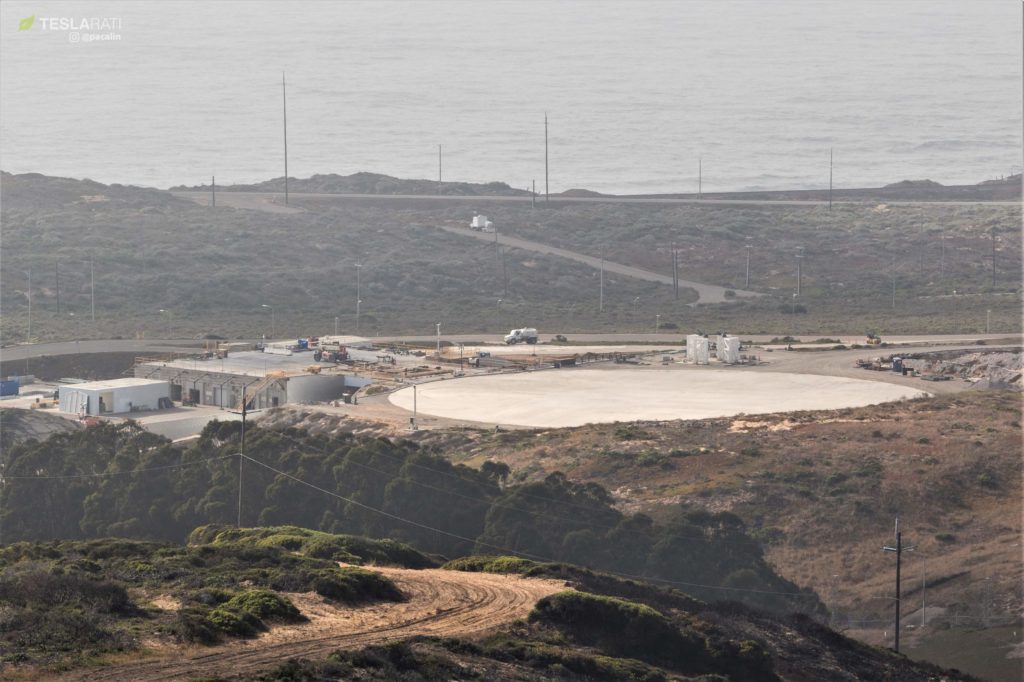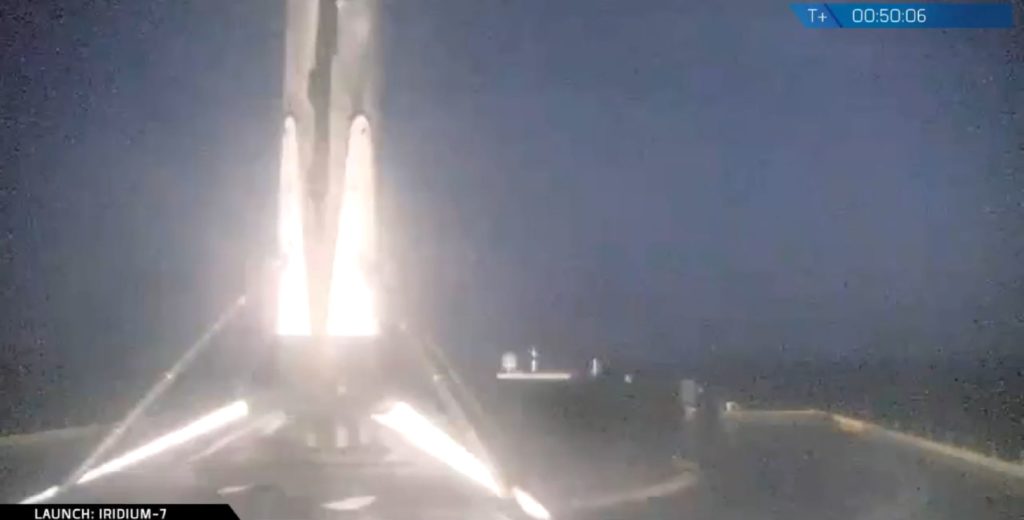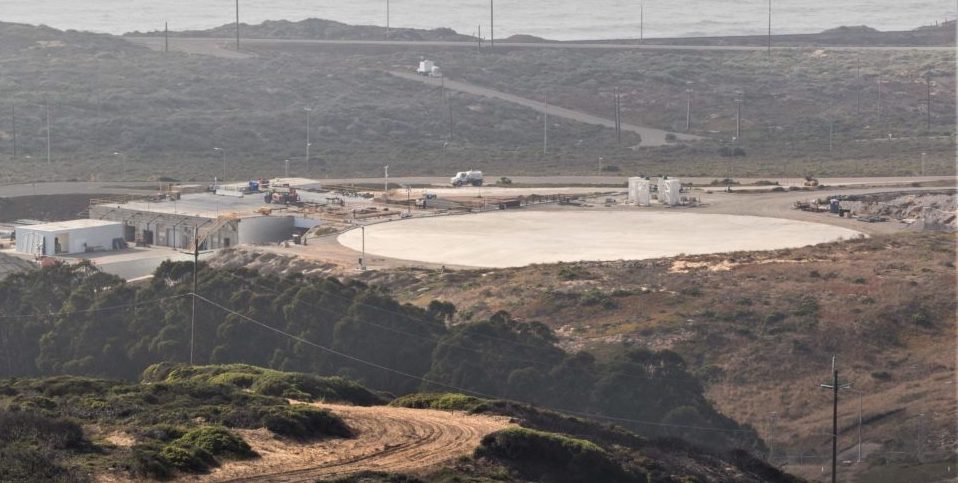
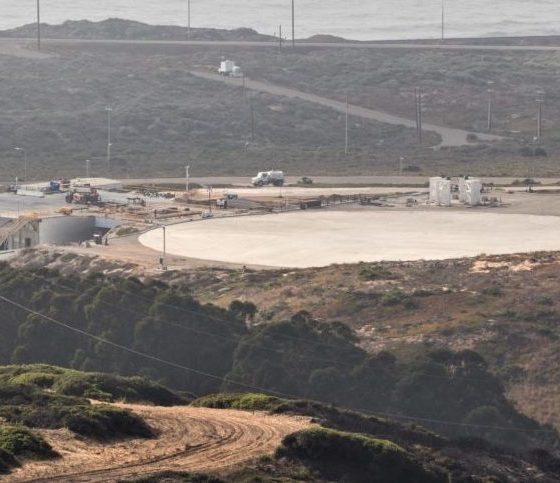
News
SpaceX readies its California landing pad for September rocket recovery debut
Just as SpaceX successfully debuted Falcon 9 Block 5 at their California launch pad and returned drone ship Just Read The Instructions (JRTI) to rocket recovery duty after a nine-month leave, the company’s next West Coast mission is already aligning for an early-September launch. The mission, SAOCOM-1A, will feature yet another inaugural event – the first use of a West Coast landing pad less than a mile from SpaceX’s Vandenberg launch pad.
For the last two and a half years, SpaceX’s Florida launch sites (Pad 40 and Pad 39A) have also been privy to a unique secondary facility known as Landing Zone-1, located a few miles away from both pads inside the boundaries of Cape Canaveral Air Force Station (CCAFS). In fact, although a number of attempts were made to recover a Falcon 9 booster aboard drone ship Of Course I Still Love You (OCISLY) in 2015, the first successful Falcon 9 booster landing happened to occur at LZ-1, followed four months later by the first successful recovery by sea.
SLC-4E after a foggy launch of Iridium-7 at Vandenberg. #spacex #iridium7 pic.twitter.com/YQkXbpBooj
— Pauline Acalin (@w00ki33) July 25, 2018
Why land on land, why land at sea?
The primary draw of an equivalent land-based pad is both simple and massive: while SpaceX’s autonomous drone ship vessels are complex, comparatively easy to damage, and extremely expensive to both operate and maintain, a concrete circle on land has relatively tiny fixed and variable costs, does not have to concern itself with volatile ocean conditions, and does not require a fleet of tugboats and service vessels to operate. Rough estimates place the cost of taking a drone ship, tugboat, and crew transport vessel hundreds of miles off the coast on missions that can last 7-14 days anywhere from $500,000 to $2 million or more, depending on how you tabulate costs. Either way, the drone ship fleet will always be more complex and more expensive than simple concrete pads on land.
One problem with land-based landing zones is that returning rockets to their launch sites is very fuel-intensive, requiring propellant margins at booster stage separation that dramatically reduce the payload that can be placed into low Earth orbit (LEO), let alone higher-energy missions to geostationary orbit. As such, without massive performance improvements, drone ships like JRTI and OCISLY will be irreplaceable for as long as Falcon 9 and Heavy are flying – SpaceX simply cannot recover rockets during the geostationary launches that comprise a huge portion of their manifest unless they have those vessels.
- Elon Musk walks among his recovered Falcon Heavy boosters at LZ-1 and 2. (Elon Musk)
- The drone ship Of Course I Still Love You spotted in Port Canaveral, FL last December. (Instagram /u/ johnabc123)
- West Coast drone ship Just Read The Instructions headed out to sea to catch a Block 5 booster on July 22. It succeeded. (Pauline Acalin)
This brings us to another conundrum. SpaceX’s Florida launch facilities support heavy commercial geostationary satellite launches as much as or more than any other type of payload in a given year of launches, meaning that the company’s now-doubled landing pad at LZ-1 is only used every once and awhile for Cargo Dragon launches and other miscellaneous and rare launches that leave enough margin in Falcon 9. SpaceX’s Vandenberg pad, on the other hand, is effectively bound to launching satellites into polar orbits (orbiting over Earth’s poles versus around the equator) – safety regulations prevent large rockets from launching over populated areas like the entire continental U.S., as an example for California launches.
Equatorial launches from East to West are much less efficient than their opposite, as Earth’s own rotation (West to East) provides rockets an appreciable performance boost. The point is that SpaceX’s Vandenberg launches are for fairly particular payloads, usually LEO communications satellites and imaging satellites that thrive in polar orbits, where one or a handful of satellites can observe almost anywhere on Earth over the course of a normal 24-hour. Those satellites also happen to be lightweight more often than not, meaning that many of the booster recoveries on drone ship JRTI could instead return to launch site (RTLS) for a dramatically simpler and cheaper recovery.
Enter Block 5
A West Coast LZ is even more intriguing and important with respect to the recent debut of Falcon 9 Block 5 at Vandenberg and the fact that all future launches. Even compared to SpaceX’s Florida LZ-1, the company’s Western pad is incredibly close to the launch pad. By landing less than a mile from SpaceX’s VAFB integration and refurbishment facilities (and launch pad), recovery and refurbishment operations should be more effortless than any before it.
- SpaceX’s yet-unused Californian Landing Zone, seen ahead of Falcon 9 Block 5’s Iridium-7 debut. (Pauline Acalin)
- SpaceX’s Vandenberg launch pad (right) and landing zone (left) ahead of the pad’s first Falcon 9 Block 5 launch, Iridium-7. (Pauline Acalin)
While the company’s VAFB launch pad is a bit older than its Eastern cousins and requires at least 3-5 weeks between launches for repairs and refurbishment, that relaxed schedule may be unbeatable for proving out the Block 5 upgrade’s true rapid reusability, as well as its ability to far more than two orbital missions per booster lifespan. SAOCOM-1A, one of two Argentinian Earth observations scheduled for launch with SpaceX, will begin that new era for SpaceX’s Vandenberg operations, including a landing pad debut permit officially granted by the FCC in the last few weeks. The Falcon 9 booster that launches that mission is bound to have a storied future ahead of itself.
For prompt updates, on-the-ground perspectives, and unique glimpses of SpaceX’s rocket recovery fleet (including fairing catcher Mr Steven) check out our brand new LaunchPad and LandingZone newsletters!

Elon Musk
Delaware Supreme Court reinstates Elon Musk’s 2018 Tesla CEO pay package
The unanimous decision criticized the prior total rescission as “improper and inequitable,” arguing that it left Musk uncompensated for six years of transformative leadership at Tesla.

The Delaware Supreme Court has overturned a lower court ruling, reinstating Elon Musk’s 2018 compensation package originally valued at $56 billion but now worth approximately $139 billion due to Tesla’s soaring stock price.
The unanimous decision criticized the prior total rescission as “improper and inequitable,” arguing that it left Musk uncompensated for six years of transformative leadership at Tesla. Musk quickly celebrated the outcome on X, stating that he felt “vindicated.” He also shared his gratitude to TSLA shareholders.
Delaware Supreme Court makes a decision
In a 49-page ruling Friday, the Delaware Supreme Court reversed Chancellor Kathaleen McCormick’s 2024 decision that voided the 2018 package over alleged board conflicts and inadequate shareholder disclosures. The high court acknowledged varying views on liability but agreed rescission was excessive, stating it “leaves Musk uncompensated for his time and efforts over a period of six years.”
The 2018 plan granted Musk options on about 304 million shares upon hitting aggressive milestones, all of which were achieved ahead of time. Shareholders overwhelmingly approved it initially in 2018 and ratified it once again in 2024 after the Delaware lower court struck it down. The case against Musk’s 2018 pay package was filed by plaintiff Richard Tornetta, who held just nine shares when the compensation plan was approved.
A hard-fought victory
As noted in a Reuters report, Tesla’s win avoids a potential $26 billion earnings hit from replacing the award at current prices. Tesla, now Texas-incorporated, had hedged with interim plans, including a November 2025 shareholder-approved package potentially worth $878 billion tied to Robotaxi and Optimus goals and other extremely aggressive operational milestones.
The saga surrounding Elon Musk’s 2018 pay package ultimately damaged Delaware’s corporate appeal, prompting a number of high-profile firms, such as Dropbox, Roblox, Trade Desk, and Coinbase, to follow Tesla’s exodus out of the state. What added more fuel to the issue was the fact that Tornetta’s legal team, following the lower court’s 2024 decision, demanded a fee request of more than $5.1 billion worth of TSLA stock, which was equal to an hourly rate of over $200,000.
Delaware Supreme Court Elon Musk 2018 Pay Package by Simon Alvarez
News
Tesla Cybercab tests are going on overdrive with production-ready units
Tesla is ramping its real-world tests of the Cybercab, with multiple sightings of the vehicle being reported across social media this week.

Tesla is ramping its real-world tests of the Cybercab, with multiple sightings of the autonomous two-seater being reported across social media this week. Based on videos of the vehicle that have been shared online, it appears that Cybercab tests are underway across multiple states.
Recent Cybercab sightings
Reports of Cybercab tests have ramped this week, with a vehicle that looked like a production-ready prototype being spotted at Apple’s Visitor Center in California. The vehicle in this sighting was interesting as it was equipped with a steering wheel. The vehicle also featured some changes to the design of its brake lights.
The Cybercab was also filmed testing at the Fremont factory’s test track, which also seemed to involve a vehicle that looked production-ready. This also seemed to be the case for a Cybercab that was spotted in Austin, Texas, which happened to be undergoing real-world tests. Overall, these sightings suggest that Cybercab testing is fully underway, and the vehicle is really moving towards production.
Production design all but finalized?
Recently, a near-production-ready Cybercab was showcased at Tesla’s Santana Row showroom in San Jose. The vehicle was equipped with frameless windows, dual windshield wipers, powered butterfly door struts, an extended front splitter, an updated lightbar, new wheel covers, and a license plate bracket. Interior updates include redesigned dash/door panels, refined seats with center cupholders, updated carpet, and what appeared to be improved legroom.
There seems to be a pretty good chance that the Cybercab’s design has been all but finalized, at least considering Elon Musk’s comments at the 2025 Annual Shareholder Meeting. During the event, Musk confirmed that the vehicle will enter production around April 2026, and its production targets will be quite ambitious.
News
Tesla gets a win in Sweden as union withdraws potentially “illegal” blockade
As per recent reports, the Vision union’s planned anti-Tesla action might have been illegal.
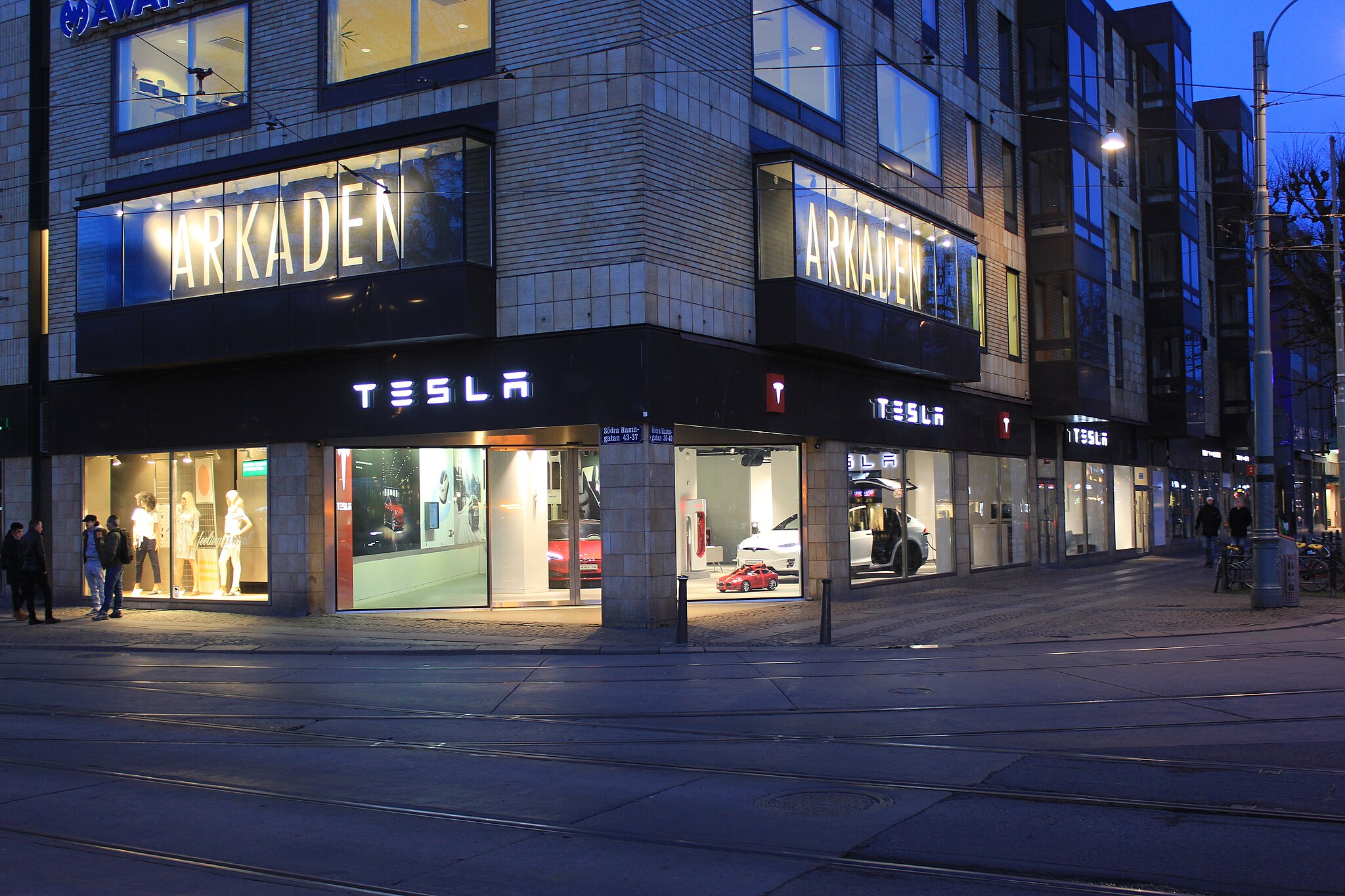
Swedish union Vision has withdrawn its sympathy blockade against Tesla’s planned service center and showroom in Kalmar. As per recent reports, the Vision union’s planned anti-Tesla action might have been illegal.
Vision’s decision to pull the blockade
Vision announced the blockade in early December, stating that it was targeting the administrative handling of Tesla’s facility permits in Kalmar municipality. The sympathy measure was expected to start Monday, but was formally withdrawn via documents sent to the Mediation Institute and Kalmar Municipality last week.
As noted in a Daggers Arbete report, plans for the strike were ultimately pulled after employer group SKR highlighted potential illegality under the Public Employment Act. Vision stressed its continued backing for the Swedish labor model, though Deputy negotiation manager Oskar Pettersson explained that the Vision union and IF Metall made the decision to cancel the planned strike together.
“We will not continue to challenge the regulations,” Petterson said. “The objection was of a technical nature. We made the assessment together with IF Metall that we were not in a position to challenge the legal assessment of whether we could take this particular action against Tesla. Therefore, we chose to revoke the notice itself.”
The SKR’s warning
Petterson also stated that SKR’s technical objection to the Vision union’s planned anti-Tesla strike framed the protest as an unauthorized act. “It was a legal assessment of the situation. Both for us and for IF Metall, it is important to be clear that we stand for the Swedish model. But we should not continue to challenge the regulations and risk getting judgments that lead nowhere in the application of the regulations,” he said.
Vision ultimately canceled its planned blockade against Tesla on December 9. With Vision’s withdrawal, few obstacles remain for Tesla’s long-planned Kalmar site. A foreign electrical firm completed work this fall, and Tesla’s Careers page currently lists a full-time service manager position based there, signaling an imminent opening.
